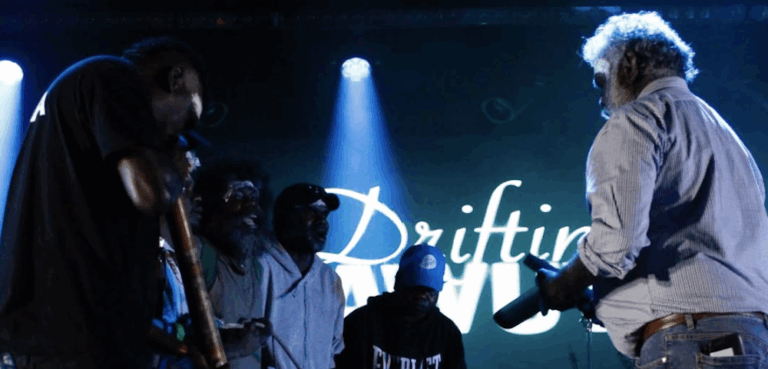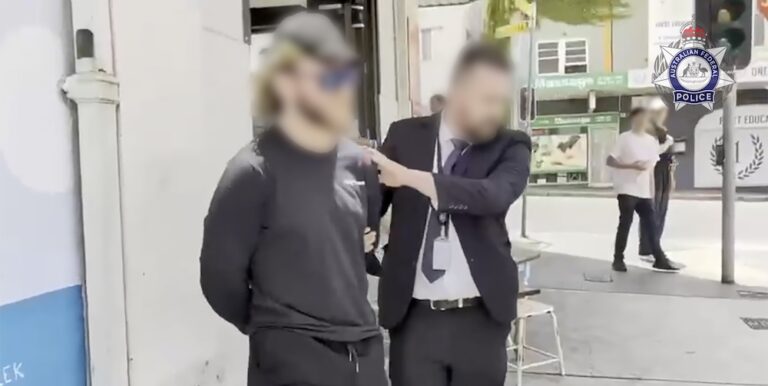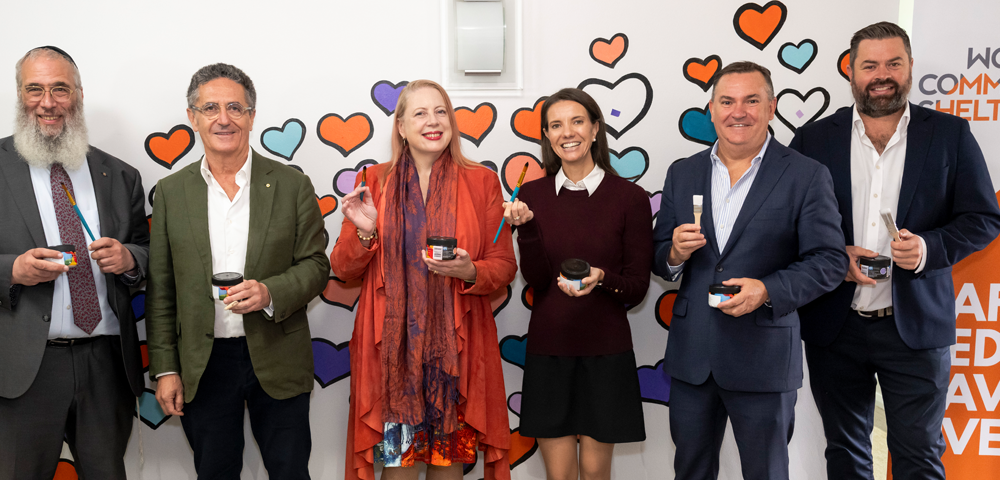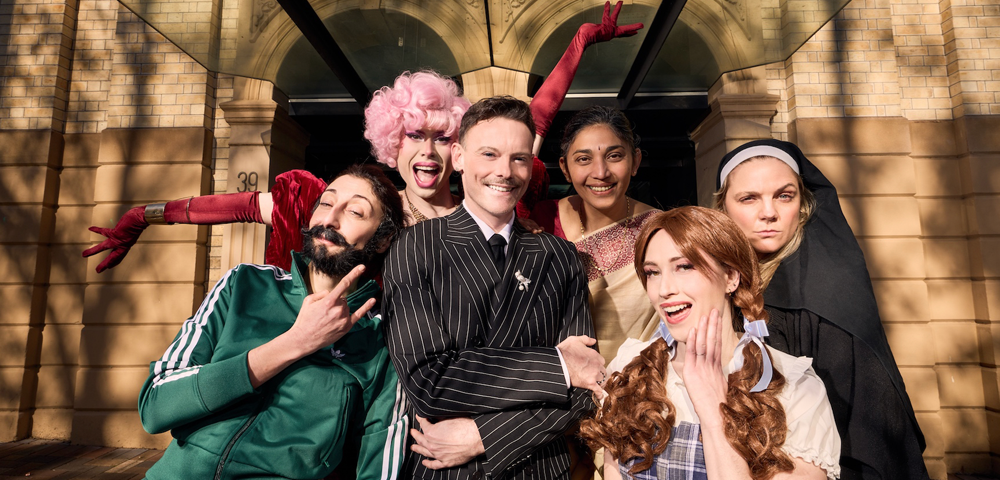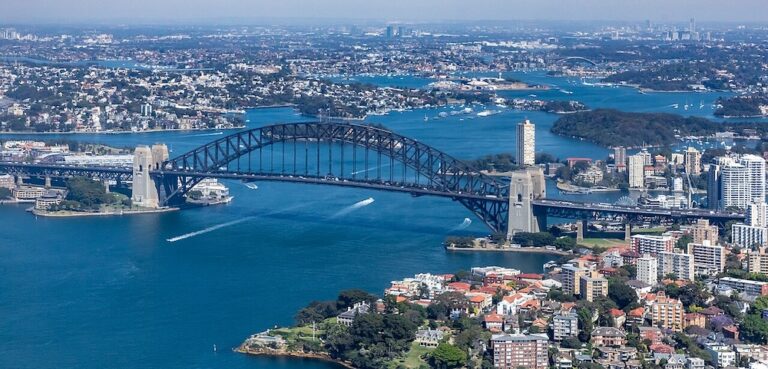
Pushed, not jumped

BY ALEC SMART
On Thursday 30 November, Glebe Coroner’s Court released their findings on a mystery that has intrigued the public since the victim was found naked at the base of a cliff south of Manly in 1988. NSW Police insisted at the time that the victim, Scott Johnson, had committed suicide, but the new inquiry – the third in almost 30 years – has found otherwise.
NSW State Coroner Michael Barnes declared, “Mr Johnson fell from the cliff top as a result of actual or threatened violence by unidentified persons who attacked him because they perceived him to be homosexual.
“I am of the view it is very unlikely Scott took his own life.”
The coroner was also critical of the Police.
“Regrettably, those responsible for the initial investigation quickly jumped to conclusions without thoroughly and impartially examining all the facts,” he said. “By the time numerous mistakes were recognised it was too late to properly test the evidence to find the truth.”
On 10 December 1988, Scott Johnson’s crumpled, naked body was found by a 13-year-old boy and two spear fishermen on a rock ledge at the base of Blue Fish Point, two days after he was last seen alive. It appeared he had fallen 50 metres from the cliff top above, in an isolated spot half way between Manly’s Shelly Beach and North Head.
Although no suicide note was found, Scott’s clothes were discovered neatly folded at the top of Blue Fish Point, 10 metres from the edge, along with some personal items and a bus ticket from Lane Cove, where the 27-year-old American mathematician had been staying.
The initial investigation by Manly Police proclaimed there was no evidence of foul play. Constable Troy Hardie, a Manly police officer who partially oversaw the case in 1988, concluded there were “no suspicious circumstances.”
“There was no evidence of any foul play, so I believed it was suicide,” Mr Hardie later told the Coroner’s Court.
Indeed, within 24 hours of the body being found, investigating officers wrote ‘NFA’ – No Further Action – on the police occurrence pad, and maintained that view, despite suspicions raised by Scott’s family and associates.
A subsequent inquest held at Glebe Coroners’ Court just three months later, on March 16 1989, issued the finding that Scott ended his own life.
NSW State Coroner Derrick Hand accepted a presentation by the head of the police investigation, Detective Sergeant Doreen Cruickshank, that Scott’s clothes folded neatly and no obvious sign of a struggle suggested he had a premeditated plan to jump.
And yet scepticism about Scott’s ‘suicide’ began from the outset. Dr Johan Duflou, who performed the autopsy on Scott’s body, told the first inquest in Glebe that Scott’s fall was so disfiguring that the police officers’ insistence there were no ‘defence wounds’ was forensically inaccurate. “There was nothing to suggest one way or another – suicide, accident or homicide.”
Blue Fish Point is a scenic location about half way along a bush trail that leads from Shelly Beach, south of Manly, to North Head, near the entrance to Sydney Harbour. It is accessed by a sandy coastal track that snakes through dense forest around abandoned WWII concrete artillery bunkers, east of an army barracks and the North Head Wastewater Treatment Plant.
The forested area surrounding the path is a notorious ‘beat’ for homosexual liaisons, and this was publicly known in the 1980s. The most popular spot for gay trysts is right on the cliff edge itself at Blue Fish Point, sheltered behind a three-metre high sandstone wall that runs its length and obscures the headland from the path behind – and potential witnesses. Entry is obtained through a hole in the wall.
Scott, a graduate student who had recently submitted his dissertation in mathematics for the Ph.D he was studying at the Australian National University in Canberra, was highly intelligent. He had achieved excellent academic grades from the University of California and the University of Cambridge and, like the familiar joke that rocket science is the domain of the brilliant, had actually worked at NASA’s Jet Propulsion Laboratory.
He was also a keen mountain climber and long-distance runner, and neither smoked nor drank. He had no history of depression or mental illness, and an autopsy revealed he was not HIV positive.
It’s likely that Scott’s then-boyfriend, Michael Noone, played a part in influencing Manly Police that Scott was suicidal. He told police that Scott had rung him in June 1988 from America, apologising for having an affair with a stranger and claiming he was so wracked with guilt he considered jumping of the Golden Gate Bridge.
On June 14 this year at the inquest into Scott Johnson’s death, Noone repeated his claim that Scott was suicidal.
“He was convinced that he had either contracted AIDS or exposed himself to a virus and he was deeply remorseful and decided to do away with himself by jumping off Golden Gate Bridge,” Noone said. “But when he got there, he found that his muscles froze over. He was effectively incapable of carrying out his intent.
“Scott was a person who set himself an extremely high standard, and when he himself fell short of those very high standards he went into a downward spiral of self-blame. Depression is the only way I can think of describing it. He turned in on himself.”
Scott’s brother Steve was dismissive of the ‘suicide’ explanation. He began researching the case, including hiring an investigative journalist, eventually spending over a million dollars to uncover aspects that the NSW Police had either ignored or overlooked.
In 2005, the revelation that an inquest into the deaths of three young men in the 1980s found that they, too, had mysteriously fallen from sea cliffs, later confirmed as victims of gangs of gay-bashers, provoked Steve to begin lobbying to get his brother’s case reopened.
This led to a second inquest in 2012 that eventually overturned the ‘suicide’ explanation and, although it dismissed the likelihood Scott took his own life, recorded an open verdict. The NSW Police Force Unsolved Homicide Team, set up a new police strike force, Macnamir, to investigate gay-hate crimes, of which there were many bashings and murders, especially along Sydney’s beach-side suburbs, throughout the 1980s-90s.
On 15 December 1988, a week after Scott’s death, 29-year-old Ronald Currie was found in a toilet block in North Manly. He’d been beaten to death. Along the Northern Beaches, multiple reports of gay bashings were recorded in the Manly Daily regional newspaper.
Less than a year later, in November 1989, the body of a 31-year-old gay barman, John Russell, was found at the base of a cliff on the Bondi side of Marks Park. Within a few weeks another gay man was bashed in Bondi, and although he managed to escape his assailants, he revealed that his attackers – likely the notorious ‘Bondi Boys’ – had threatened to hurl him over the cliff. “You’re going over the side, you poofter!” was the chilling threat.
Another gay man, TV newsreader Ross Warren, disappeared in the same cliff area at Marks Park, Tamarama, a known gay beat, around the same time. His body was never found, probably eaten by sharks.
Of 88 unsolved murders in Sydney spanning three decades from the 1970s, at least 30 fit the gay-hate agenda.
Criminologist Stephen Tomsen, who worked with NSW Police, identified 74 anti-homosexual killings between 1980 and 2000.
I knew a gang of gay-bashers that operated on Sydney’s North Shore during the 1980s. In 1982, at the age of 15, when I was attending college, one of my class colleagues had served time in youth detention for killing a gay man near St Leonards’ Park in North Sydney. Because he was a minor and claimed the older man had propositioned him, his charge was downgraded to manslaughter.
And yet police, accepting he was forced to ‘defend’ himself, were unaware of the true nature of his methodology: he was the lure, or ‘bait’, to attract gay men into secluded areas where they were ambushed by his gang, who beat them unconscious – or to death.
After release from custody he and his cohorts continued to batter gay men using home-made weapons. In the case of the St Leonards’ Park victim, they threw him over the Falcon St. Bridge into traffic on the Warringah Freeway below. It is highly probable they too visited Blue Fish Point during their rampages.
Detective Chief Inspector Pamela Young, the Unsolved Homicide Team investigator who headed the 2013 operation in the wake of the second inquiry into Scott’s death, prepared a 445-page report for the Coroner’s Court.
Later criticised for sloppy investigative work, she rejected the likelihood that gay men were set upon by thugs at Blue Fish Point because no victims come forward to say they were bashed and she could find no records of hate crimes at nearby Manly Hospital.
“Based on these realities,” Det. Young concluded, “it is not unreasonable to draw an inference that no crimes of personal violence occurred at the North Head gay beat and certainly none that required medical treatment.”
Yet victims of bashings were reluctant to seek police help. Gordon Sharp, a gay man who regularly visited the Blue Fish Point beat, explained why to the Glebe inquest in June this year.
“Occasionally the word would go up, ‘bashers!’ You’d hear a scream go up, you would grab your kit and dash off. No one saw the value of reporting to the police because you were likely to get another smacking from police.”
The Johnson family’s lawyer, John Agius SC, told the NSW Coroner’s Court a private investigation had identified five gangs that preyed upon gay men around Sydney’s east coast beaches, including Blue Fish Point, and highlighted 50 people of interest as possible murderers.
Nevertheless, Glebe Coroner Michael Barnes stopped short of recommending a reopening of the case
NSW Police released a statement.
“While the Coroner has not made a recommendation for further investigation, we understand the frustration of Mr Johnson’s family, who have sought the answers to his death.
“The case will remain open and any new information provided to police relating to the circumstances of Mr Johnson’s death will be thoroughly investigated.”
Scott’s brother Steve is still hopeful for a resolution, and urged the NSW Government and Police to launch ‘fresh eyes’ into investigating his brother’s death and other gay-hate crimes from the time period.
“I strongly believe Scott’s killers are out there today,” he stated after the Glebe Corner’s verdict was issued. “We may have heard from friends of the killers through the inquest. They should be encouraged to come forward. The inquest produced many leads that should still be pursued. These leads now clearly need to be urgently followed-up as part of an honest and thorough homicide investigation.
“It is a historic time in Australia for the LGBTQI community, for everyone … I’m hoping now that the coroner has focused the police’s attention on homicide they see this as a new beginning,” he said.
“Especially because of the progress that’s being made for equality in Australia, stepping up and solving this crime is a hero opportunity… an opportunity for the police to show they are now on the right side of history.”


